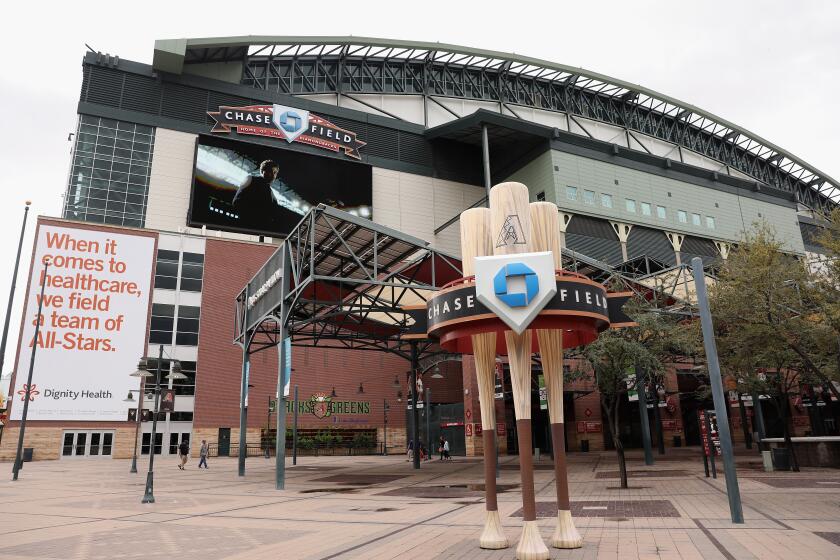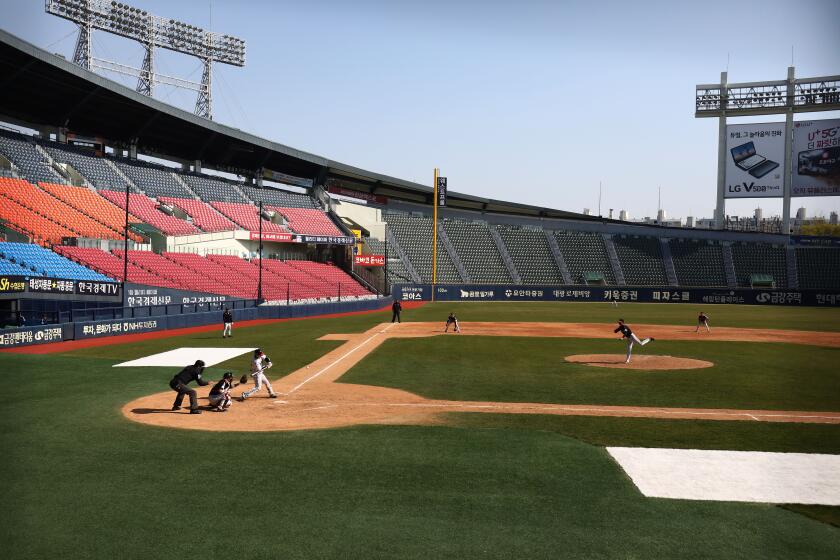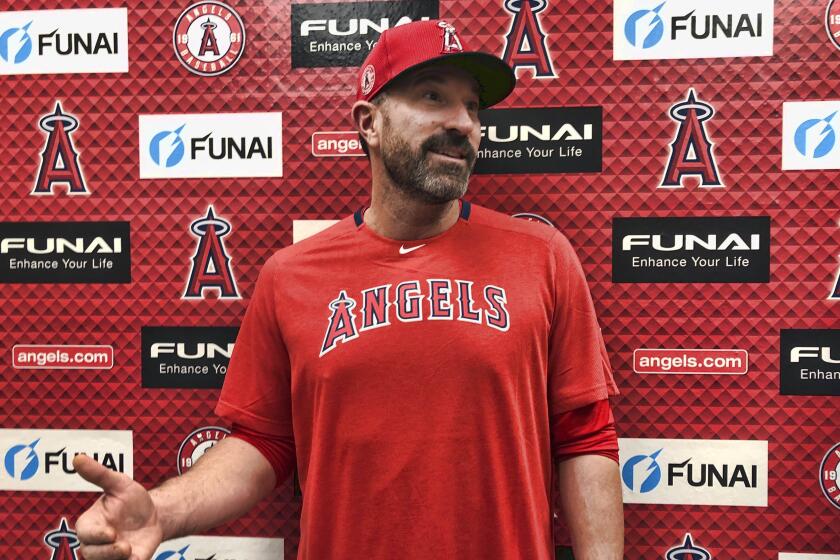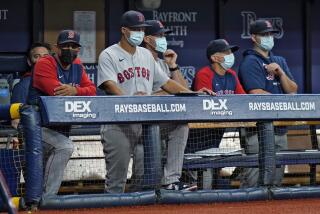Plan to launch MLB season in a coronavirus-free Arizona bubble isn’t airtight
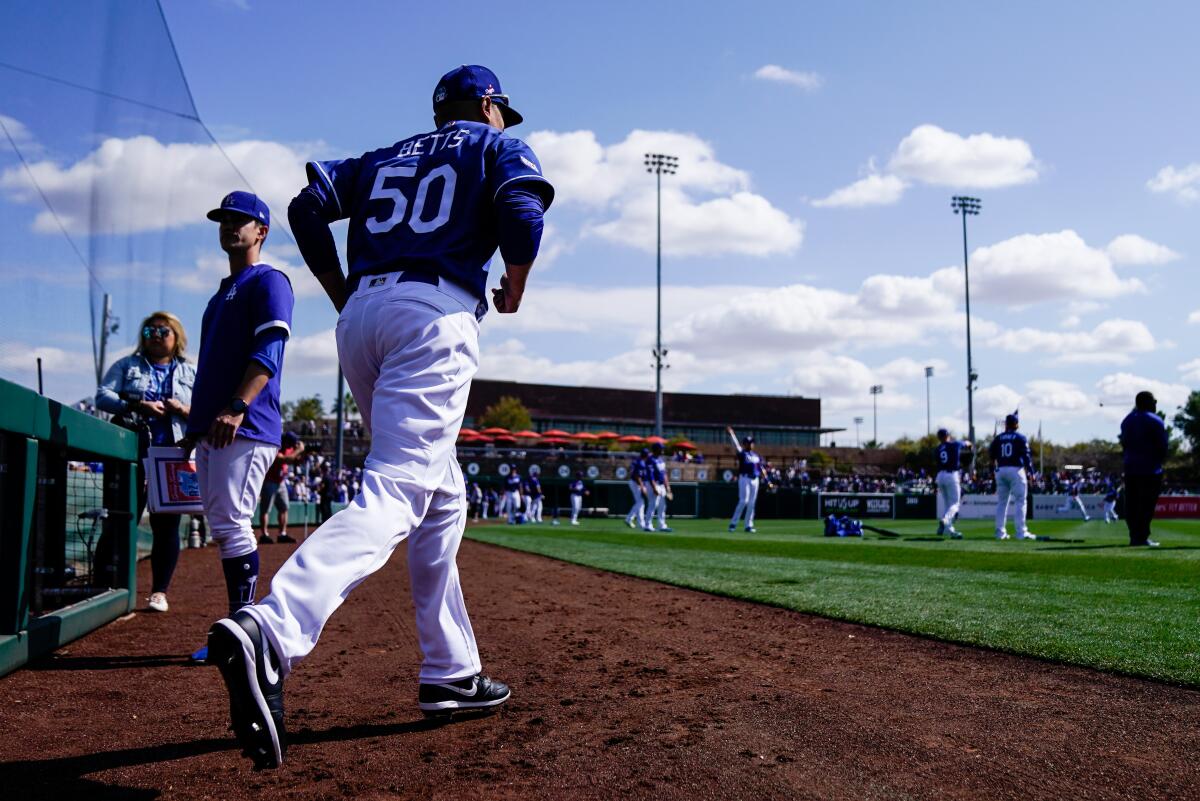
- Share via
Mike Trout is the face of baseball, finally. The three-time most valuable player has stepped carefully into the off-field spotlight, embracing the chance to sell his sport and even sharing his most tender moment with the world.
Yet, a plan floated to save the major league season could force the Angels star to risk damaging his image by making an uncomfortable choice. If the 2020 season is played within the confines of an Arizona bubble, Trout could have to choose between missing the birth of his first child or leaving his team for several weeks of a shortened season. A third option might be sequestering his family in a makeshift delivery center that only his wealth would make possible.
As the prospect of games in packed ballparks becomes increasingly distant, the MLB commissioner’s office and players’ union have explored whether this season can be completed by assembling all 30 teams in intended virus-free zones in the Phoenix area. If public health officials approve — and the commissioner’s office has gotten positive initial feedback — owners and players would then have to decide whether the economic gains of bringing back baseball amid the coronavirus crisis would represent a morale boost for a quarantined nation or an audacious grab of limited medical resources.
“If you truly lock people down, you would need a military-style perimeter where no one can get in or out,” said Dr. Dena Grayson, a Florida-based expert on Ebola and other pandemics.
Major League Baseball states that holding games in one central area is one of several ideas discussed regarding how and when to start the season.
The concept is simple: Test players and other personnel for the virus. If they test negative, they are admitted to the so-called bubble, where they would play, eat and sleep for months in an endless loop from hotel to ballpark and back again. The games would be played primarily at Chase Field, home of the Arizona Diamondbacks, and at the 10 spring training sites in the Phoenix area.
In a carefully worded statement Tuesday, MLB acknowledged that scenario as “one potential option” for playing a 2020 season.
“We have not sought or received approval of any plan from federal, state and local officials, or the Players Association,” the statement read. “The health and safety of our employees, players, fans and the public at large are paramount, and we are not ready at this time to endorse any particular format for staging games in light of the rapidly changing public health situation caused by the coronavirus.”
In a Ketchum Sports poll released Tuesday, 45% of American sports fans said games should not resume until fans can attend, with 21% in favor of games without fans and 17% in favor of current seasons called off entirely.
“If it’s safe, I’m in,” Colorado Rockies star Nolan Arenado told the Denver Post. “I believe these ideas wouldn’t be thrown around if it wasn’t approved or can be [approved]. I want to get back out there and play.”
One player testing positive for COVID-19 could again shut down the Korean Baseball Organization, which is set to begin exhibition games April 21.
Fan-free MLB games in Arizona could start as soon as May, according to an ESPN report, but two National League executives told The Times that timetable was overly optimistic. One of the executives doubted the season could start as soon as June; the other was skeptical that the Arizona plan would be feasible at all.
The White House last week pointed to models that estimated from 100,000 to 240,000 Americans would die because of COVID-19, but one of those models Tuesday had revised its estimate of deaths to a range of 49,000 to 136,000, with the total number starting to flatten in mid-May. As of Tuesday afternoon, the U.S. death count had topped 12,000.
There would be little sense in MLB waiting until the fall so fans could be welcomed back then, Grayson said. Coronaviruses tend to be seasonal, she said, so it is possible that this one could abate in the summer and “boomerang back come fall.”
But the concept of quarantining some 1,500 baseball personnel comes with its own perils. Coaches, trainers, umpires and other support staff tend to be older and, as such, have a greater risk of serious illness or death should they be infected.
A negative test does not necessarily mean a player is free from the coronavirus. In the letter that resulted in his ouster as commander of the USS Theodore Roosevelt, Capt. Brett Crozier noted that, of the first 33 sailors infected with the virus, seven initially tested negative, putting them at risk of infecting others.
That, Grayson said, would mean daily testing and re-testing of players within the bubble, as well as testing of service and delivery workers.
New Angels pitching coach Mickey Callaway wants his charges to act as if they’re about to begin spring camp so they’ll be ready when baseball resumes.
“It’s not like a biosphere, where they are cooking their own food and you lock the door and say, you’re good to go,” Grayson said.
“You need to bring in supplies. You’ve got to bring in food and medicine and baseballs and gauze. You’ve got to bring in all the supplies that people need to live ordinary lives. That’s not trivial. That means you have to test, test and re-test.”
The players might have to decide whether to quarantine with their families in hotel rooms or remain apart from them for months. If the latter option is enforced upon all, so as to minimize the number of people within the bubble, Milwaukee Brewers pitcher Brett Anderson tweeted that the Arizona plan “begins and ends right here.”
However, player agent Rafa Nieves tweeted: “I get that being separated from your family is not easy and it’s an obstacle, but there are thousands of Latino players both in the majors and the minors who are separated from their families for nine months, sometimes even more.”
The Trout family is scheduled to be blessed with a son in August. If Trout were to leave the bubble for the birth in a hospital, Grayson said, he could be subject to a 14-day isolation period upon his return. He could skip the birth, or a doctor and/or midwife could be cleared to enter the bubble and set up a delivery room within.
That possibility is one among the many “optics” possibilities that Grayson said owners and players might have to confront. For one, she said, the personnel administering tests in the MLB bubble would need the personal protective equipment currently in short supply in much of the country. For another, the tests themselves would be required in numbers beyond current availability in much of the country.
For instance, Grayson said, a Malayan tiger at the Bronx Zoo recently tested positive for COVID-19.
“I do think there’s a risk that there will be major resentment for the sports leagues,” she said. “That tiger gets a test, Mike Trout gets a test, but my mom can’t get a test?”
Times staff writer Jorge Castillo contributed to this report.
More to Read
Are you a true-blue fan?
Get our Dodgers Dugout newsletter for insights, news and much more.
You may occasionally receive promotional content from the Los Angeles Times.

